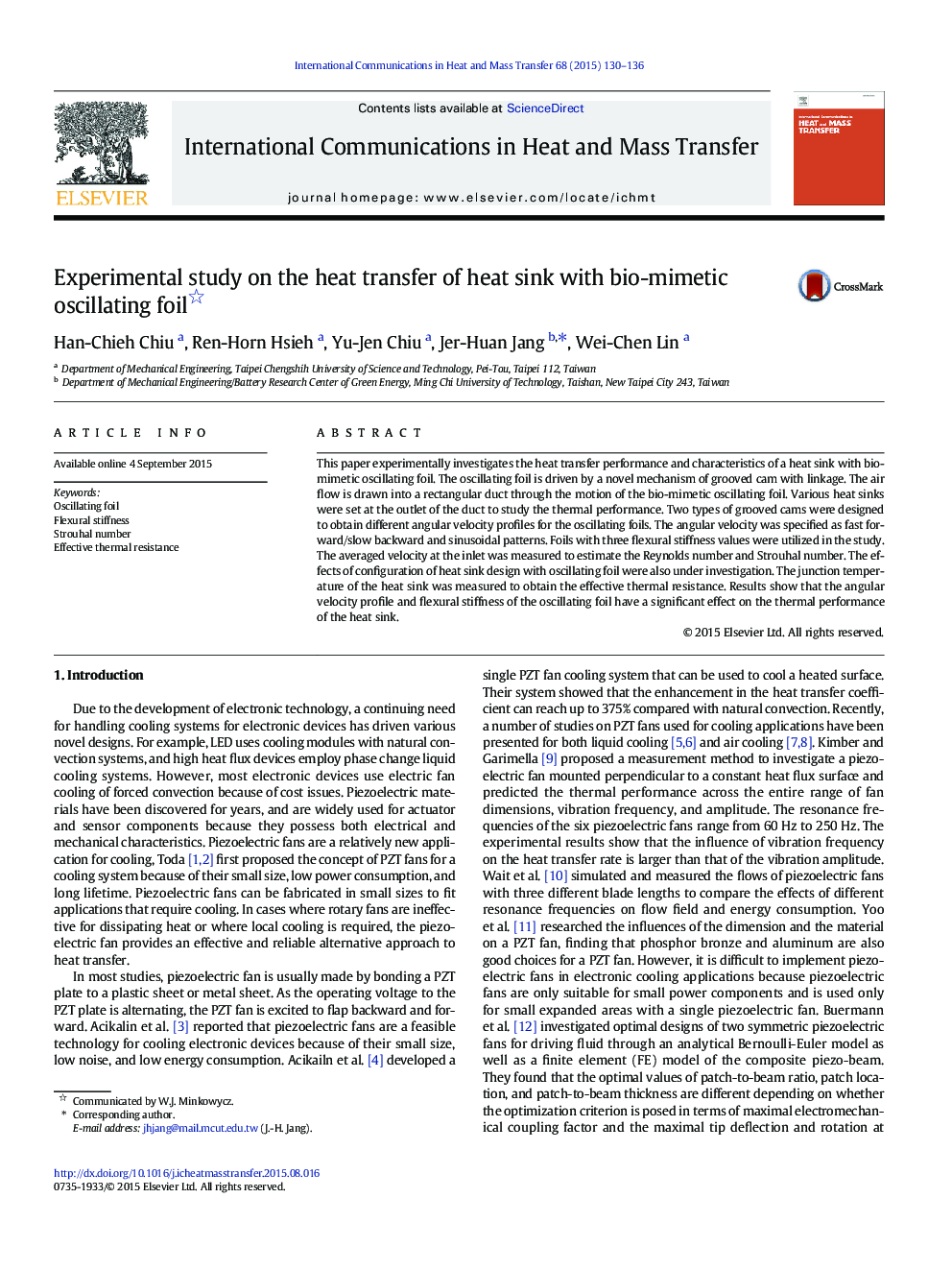| Article ID | Journal | Published Year | Pages | File Type |
|---|---|---|---|---|
| 653022 | International Communications in Heat and Mass Transfer | 2015 | 7 Pages |
This paper experimentally investigates the heat transfer performance and characteristics of a heat sink with bio-mimetic oscillating foil. The oscillating foil is driven by a novel mechanism of grooved cam with linkage. The air flow is drawn into a rectangular duct through the motion of the bio-mimetic oscillating foil. Various heat sinks were set at the outlet of the duct to study the thermal performance. Two types of grooved cams were designed to obtain different angular velocity profiles for the oscillating foils. The angular velocity was specified as fast forward/slow backward and sinusoidal patterns. Foils with three flexural stiffness values were utilized in the study. The averaged velocity at the inlet was measured to estimate the Reynolds number and Strouhal number. The effects of configuration of heat sink design with oscillating foil were also under investigation. The junction temperature of the heat sink was measured to obtain the effective thermal resistance. Results show that the angular velocity profile and flexural stiffness of the oscillating foil have a significant effect on the thermal performance of the heat sink.
